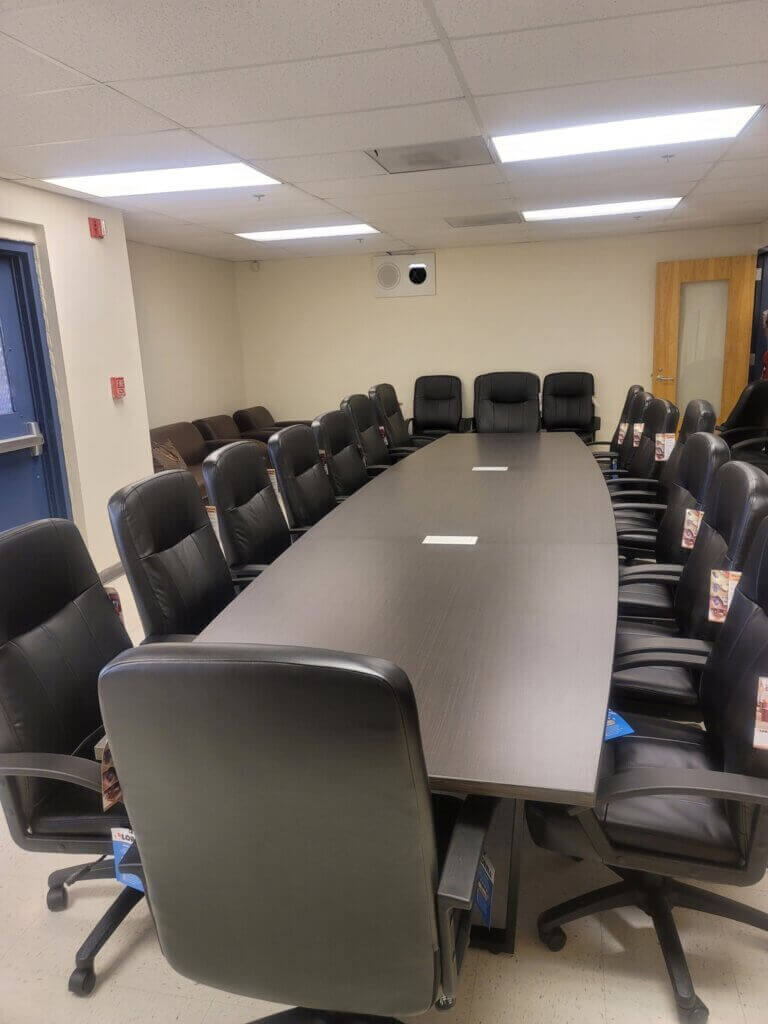As workplaces continue to evolve, hybrid work models are becoming the new standard. To accommodate this shift, companies must rethink their office designs, especially their conference rooms. A well-designed conference room is more than just a meeting space; it’s a hub for collaboration, innovation, and inclusivity. Here are some tips from Gibson’s Office Solutions on how to create a welcoming and functional conference room.
Understand Your Team’s Collaboration Needs
Before making any design decisions, take time to understand how your team collaborates. Does your team rely on brainstorming sessions, formal presentations, or small group discussions? Each activity requires a different setup. For instance, smaller teams may benefit from cozy huddle spaces while larger teams might require spacious conference rooms with advanced audio-visual setups. A thorough assessment ensures the design aligns with your team’s requirements.
Prioritize Advanced Technology
Technology is the backbone of a hybrid conference room. Without the right tools, meetings can become chaotic and unproductive. Consider investing in high-quality audio and visual equipment, such as advanced microphones, speakers, and cameras. Ensure that platforms like Zoom, Microsoft Teams, or Google Meet integrate smoothly into your conference room setup. Equip the room with wireless casting options so participants can share content from their devices without hassle.
Design for Inclusivity
Hybrid meetings should provide equal opportunities for all participants to contribute, regardless of their physical location. Inclusivity starts with intentional design choices. Round or U-shaped tables foster face-to-face interactions among in-person attendees, while strategically placed cameras ensure remote participants can see and engage with everyone. Install multiple cameras and omnidirectional microphones to help remote workers feel more connected by offering a clear view of the room and even sound.
Optimize Room Layout for Flexibility
Hybrid work demands flexibility, and your conference room should adapt to different meeting styles. Consider modular furniture that can be easily rearranged for various group sizes and purposes. Create areas for brainstorming, private discussions, or standing meetings within the same conference room. Install whiteboards or glass boards for impromptu notes and ideas, and magnetic boards can serve as a tool for posting visual aids. Gibson’s Office Solutions can help you select the office furniture and office supplies that work for your room.
Enhance Acoustics
Poor acoustics can disrupt meetings and frustrate participants. Combat this issue by incorporating soundproofing materials such as acoustic panels, carpets, and curtains to minimize echo and external noise. Place speakers evenly across the room for balanced audio distribution.
Ensure You Have the Correct Lighting
Lighting also plays a crucial role in setting the tone for meetings. Install dimmable lights to accommodate different meeting formats, such as presentations or brainstorming sessions. Where possible, allow natural light to enter the room as it boosts mood and productivity.
Implement User-Friendly Scheduling Systems
Managing a hybrid workforce means streamlining conference room usage. Digital scheduling systems integrated with employees’ calendars help avoid double bookings. Add digital touchscreens outside the room to display availability in real-time. Encourage efficiency by setting clear booking guidelines, such as blocking time for hybrid meetings or ensuring the room is available for impromptu brainstorming sessions.
Foster a Comfortable Environment
Comfort directly impacts productivity. Equip your conference room with ergonomic furniture from Gibson’s Office Solutions to reduce discomfort during long meetings. Ensure the room has adjustable heating and cooling systems to accommodate personal preferences. Add indoor plants, artwork, or soft furnishings to make the space feel welcoming and less corporate. Encouraging a sense of comfort ensures attendees remain focused and engaged.
Ensure Reliable Connectivity
Seamless connectivity is essential for hybrid meetings. Install high-speed internet with reliable coverage. Consider using a dedicated network for conference room technology to avoid bandwidth issues. For wired internet, be sure to provide Ethernet ports for devices that require a stable wired connection. Reliable connectivity ensures meetings flow smoothly without technical hiccups.
Train Employees on Technology Use
Even the most advanced tools are useless if employees don’t know how to use them. Host training sessions or workshops to familiarize staff with the room’s technology. Provide user-friendly guides or quick-reference materials to boost confidence during meetings.
Reflect Your Company’s Brand and Culture
Your conference room should reflect your company’s values and aesthetics. For example, choose colors that align with your brand identity while fostering a productive atmosphere. Blue tones promote calm and focus, while warmer hues encourage creativity. A well-branded conference room creates a cohesive and professional impression for internal and external attendees alike.
Regularly Evaluate and Update
A conference room isn’t a “set-it-and-forget-it” space. Regularly assess its functionality by gathering employee feedback. Are there tools they find difficult to use? Are there features they wish they had? Periodic upgrades ensure your conference room continues to meet evolving needs.
By working with Gibson’s Office Solutions, you can blend functional design with employee well-being, ensuring a space where everyone thrives. If you need to create a new conference room to accommodate your hybrid employees, or your current space feels dated, we can help. Contact our Tucson or Phoenix office today to start selecting the perfect office furniture and supplies.


